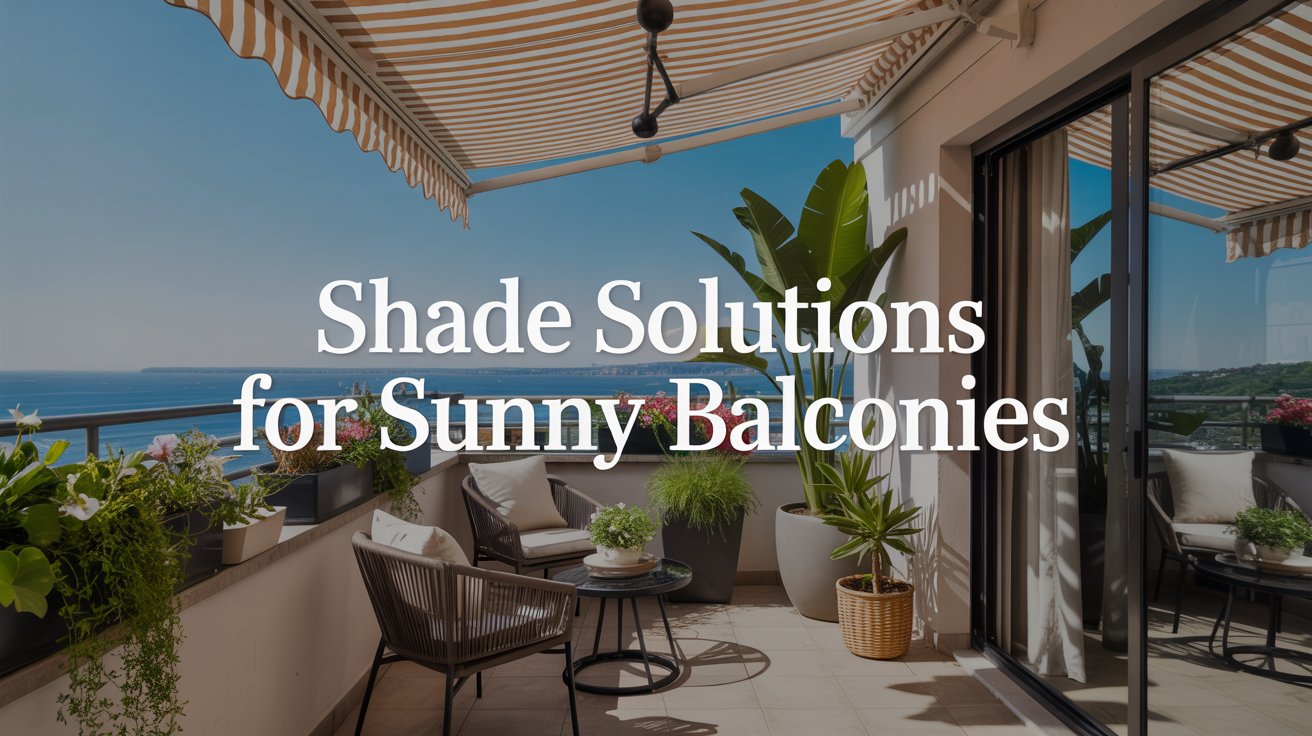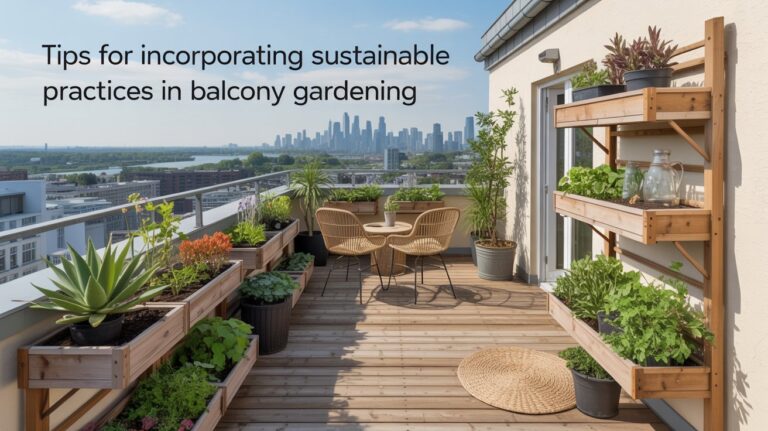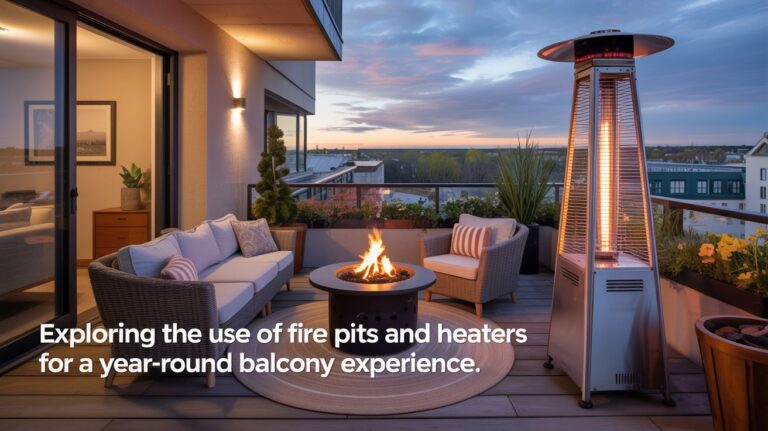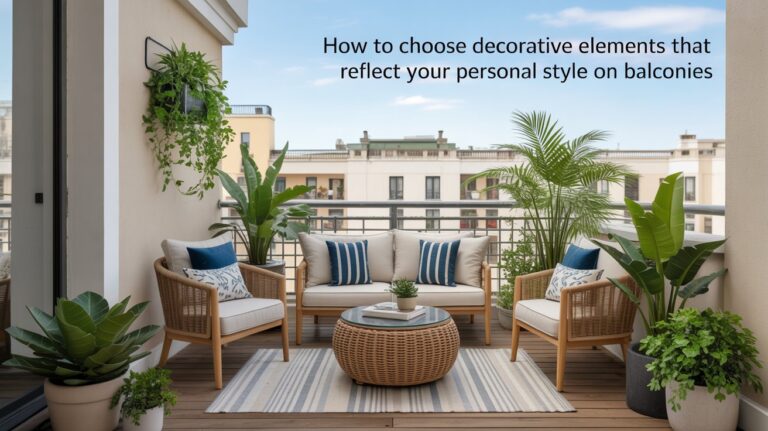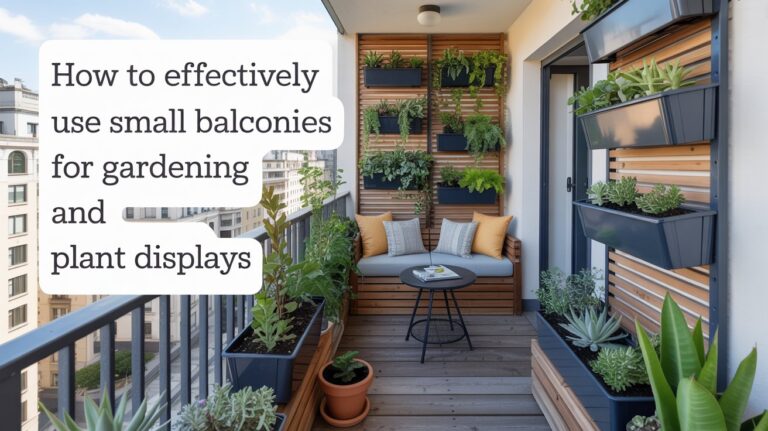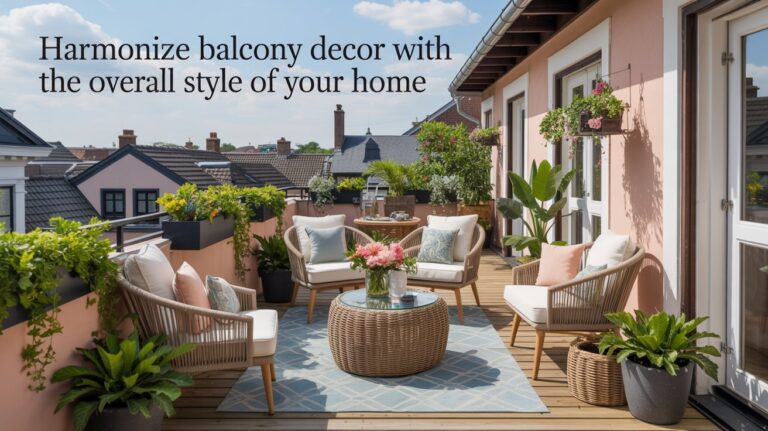How to Incorporate Shade Solutions for Comfort on Sunny Balconies
I have been, or can be if you click on a link and make a purchase, compensated via a cash payment, gift, or something else of value for writing this post. As an Amazon Associate, I earn from qualifying purchases. Please read my full Affiliate Disclosure for more information.
To turn a sunny balcony into a cool, inviting retreat, start by mapping your sun exposure and comfort zones. Choose shade that fits your space—awnings for broad coverage, screens for ventilation, or curtains for flexible light control. Use UV‑resistant fabrics and weatherproof hardware, plus climbers or containers to add natural shade without blocking views. Quick DIY hacks help too, like lightweight fabrics or tension rods. With balanced airflow and minimal clutter, you’ll enjoy durable comfort—and there’s more to explore beyond this.
Key Takeaways
- Assess your sun patterns to map peak exposure and identify comfortable shade zones for targeted solutions.
- Choose between awnings, screens, and curtains based on coverage, ventilation, and ease of use aligned with your shade map.
- Use UV-resistant fabrics, weather-treated finishes, and sturdy hardware to ensure durable outdoor shading.
- Incorporate plants and trellises to create natural shade while preserving views and adding greenery.
- Employ quick, budget-friendly hacks like tension rods, lightweight fabrics, and repurposed tarps for reversible shade setups.
Assess Your Sun Patterns and Comfort Zones
Assess your sun patterns by spending a few calm minutes observing how light moves across your balcony from morning to late afternoon. You’ll notice where sun exposure peaks and where shade naturally forms as the day shifts. Note how long you’re comfortable in direct light and where discomfort begins. Mark your comfort zones—areas you can enjoy without squinting or overheating. Track reflections from walls or railings that boost glare. With this map, you’ll plan where to place plants, seating, or temporary shade. Clear awareness of sun exposure and comfort zones guides practical, tailored shade choices.
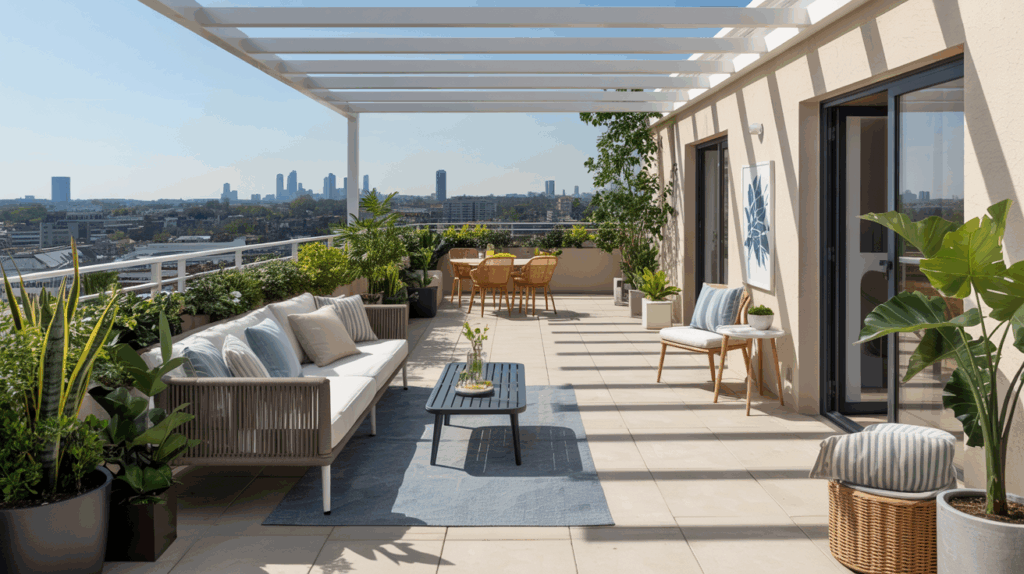
Choosing Between Awnings, Screens, and Curtains
Now that you’ve mapped where the sun hits and where you’re comfy, you can match shade options to those zones. Choosing between awnings, screens, and curtains comes down to control, look, and ease of use. Think about fabric choices and material durability as you compare: awnings offer broad coverage; screens give ventilation without full shade; curtains soften edges and adjust mood.
- Awnings: quick sunblock, outdoor-friendly fabrics, solid durability assessments.
- Screens: breathable shading, lightweight installation, durable framing basics.
- Curtains: flexible light control, cozy feel, easy care and material checks.
Fabric and Materials That Weather Outdoor Use
Fabric and materials that weather outdoor use must stand up to sun, rain, and temperature swings without fading or sagging, so look for UV-resistant fibers, weather-treated finishes, and sturdy stitching. You’ll want UV resistant fabrics that resist fading in bright light and resist moisture without mildew. Choose weatherproof materials that tolerate temperature fluctuations and heavy humidity, and seams designed to resist unraveling. Favor tight weaves, corrosion-resistant hardware, and colorfast dyes. Consider sun exposure, wind, and rain patterns on your balcony, ensuring easy maintenance and cleaning. With the right fabric and materials, your shade stays effective and inviting season after season.
Plants and Green Shade: Natural Solutions
Plants and green shade can transform a sunny balcony into a cool, inviting retreat, using vines, trellises, and potted greenery to soften harsh light and add natural texture. You’ll blend garden decor with smart plant placement to create depth, color, and airier space.
1) Choose climbers and sturdy trellises positioned to shade seating without blocking views.
2) Group containers by height and texture, alternating trailing and upright varieties for visual rhythm.
3) Elevate greens with a small herb or flowering accent, keeping plant placement simple for easy care.
This natural approach preserves openness while delivering practical, plant-forward shading.
DIY Hacks for Quick and Budget-Friendly Shade
You’ll find DIY shade hacks that are quick to set up and easy on the wallet. From budget-friendly fabric canopies to simple tension cords, these ideas fit tight spaces without a big price tag. Let’s explore quick installation tricks that keep your balcony stylish and shaded.
DIY Shade Hacks
If you’re short on time and budget but still want real shade, quick DIY hacks can make a sunny balcony instantly more comfortable.
- Use a lightweight fabric shade, focusing on fabric selection to maximize breathability and light diffusion.
- Create a vertical shade wall with inexpensive panels, anchored beams, and plant placement to weave natural color and airflow.
- Repurpose a prefolded tarp or curtain as a temporary sun veil, trimming edges for a cleaner look and easy removal.
These ideas are practical, fast, and reversible, giving you calm, cooler moments without overhauling your space.
Budget-Friendly Solutions
Budget-friendly shade doesn’t have to be elaborate. You can swap in simple, effective DIY ideas that save cash and still boost comfort. Start with shade fabrics found at home improvement stores or repurpose old curtains into panels for a quick screen. Tie them with lightweight cord or shower curtain rings for easy removal. Consider ceiling-mounted tension rods to hold fabric without screws. Use bamboo blinds as a breathable, reusable layer, trimming to fit. For budget options, layer a cheap outdoor curtain over a lightweight lattice to create shade and texture. You’ll gain usable hours without breaking the bank.
Quick Installation Tricks
Snag quick shade without a lot of fuss by leaning on simple, proven hacks that get you sun protection fast. You’ll stay informed while keeping costs tiny with easy, DIY-friendly moves.
1) Secure shade fabrics to railing or ceiling using lightweight mounting brackets, then trim edges for a clean look.
2) Use tension rods and outdoor cable ties to create a temporary shade sail, adjusting height to block direct sun efficiently.
3) Opt for foldable fabric panels with quick-release clips, so you can deploy or store them in minutes.
Quick, budget-conscious shade without complicating your balcony design.
Installing for Minimal Visual Clutter and Maximum Airflow
To keep your balcony serene and breezy, prioritize installations that disappear into the background while preserving airflow. Choose shade solutions with slim profiles, recessed mounts, or ceiling-integrated fabrics that don’t crowd sightlines. Favor materials and colors that reflect sunlight while adding minimal bulk, so nothing blocks vents or windows. Guarantee mounting points align with railing lines to avoid visual clutter. For UV protection and wind resistance, select fabrics rated for outdoor use and hardware designed for gusts. Install brackets low and discreet, and route cables or chains along edges rather than across the opening. Simplicity, airflow, and durability unite for a calm, airy space.
Maintenance, Safety, and Weather Readiness
Balcony shade solutions are only as good as how they hold up over time, so this is the moment to plan for maintenance, safety, and weather readiness. You’ll protect comfort by inspecting anchors, fabrics, and motors regularly, and you’ll schedule seasonal checks before storms. Prioritize pest control to prevent nesting near fasteners, and monitor for wear that could compromise structural integrity. Ready measures keep you from surprises and injuries.
- Inspect fasteners and mounting points quarterly, tightening as needed.
- Test fabric integrity and motor function after heavy rain or wind.
- Review weatherproofing and pest control plans before peak seasons.
Balancing Style With Function: Accessorizing Your Balcony Shade Strategy
Accessorizing your shade setup lets you tailor light, privacy, and style without compromising function. When you pick fabrics, hardware, and patterns, you create a cohesive look that still supports comfort. Consider lighting ambiance: choose textiles that soften glare while letting you control sun angles, and pair fixtures that enhance evenings on the balcony. Color coordination matters; align drapery hues with furniture tones or go bold with a contrasting accent for visual interest. Keep practicality in mind: easy-clean materials, weather resistance, and simple operation. Subtle texture and thoughtful layering elevate both mood and usability, without cluttering the space.
Conclusion
You’ve mapped sun patterns, weighed shade options, and picked fabrics that endure spray and breeze. You’ll blend plants, screens, and curtains for natural relief without crowding sightlines. DIY tweaks won’t derail airflow or style, and easy maintenance keeps things safe, sturdy, and ready for weather swings. Your balcony becomes a cool, inviting retreat—functional, balanced, and eye-catching—where shade meets comfort, without clutter, and every sunny afternoon feels thoughtfully curated for you.
